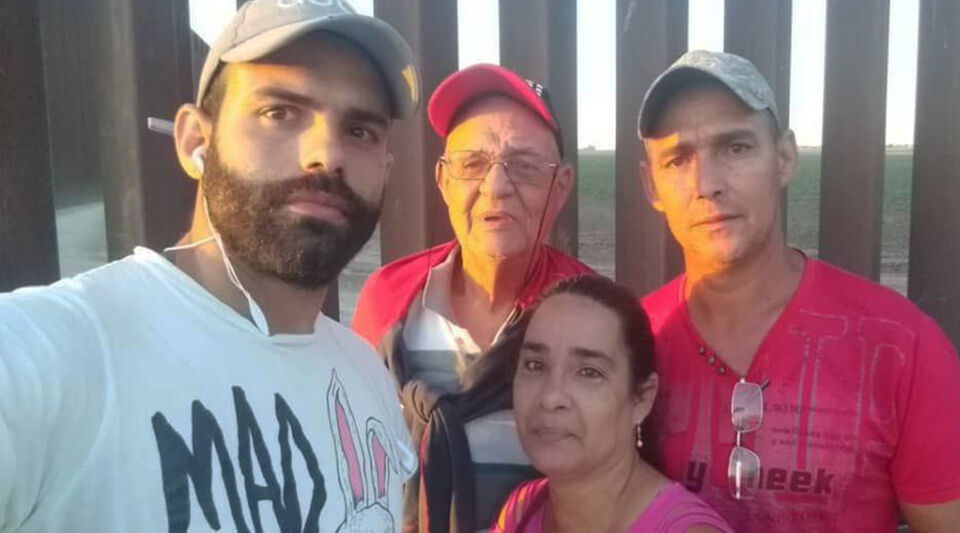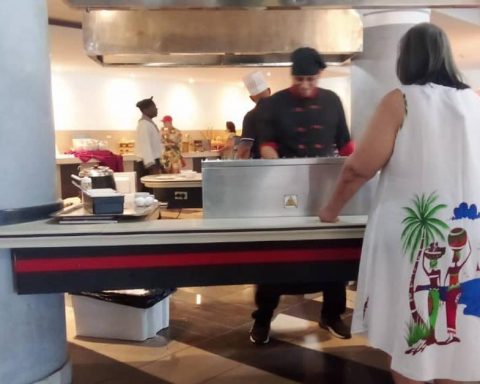Leave Cuba? The grandchildren and children had already done it years before. Martín Guzmán Fernández did not have a hard time deciding. On Saturday, after 78 days of crossing, he arrived in the United States, “he crossed through Arizona and this Sunday the migra picked him up” along with three other Cubans who accompanied him, he tells 14ymedio Ernesto, the son of this habanero.
He was released from the migrant detention center on Monday. “He was less than 24 hours and they have treated him very well,” confirms his son, on the way to the place to pick him up and reunite him with the rest of the family.
“My father is part of one of the lost generations, from when the revolution triumphed. Deceived like many,” says Ernesto by telephone, who is visiting Panama, where his sister and nephew are.
At 82 years old, Guzmán “had to continue working in the Ministry of Construction because retirement was not enough for him,” says Ernesto. “My father is diabetic and he has problems with a vein. He had a heart attack.”
“My father is part of one of the lost generations, from when the revolution triumphed. Deceived like many,” Ernesto says by telephone
Leaning on his cane, this octogenarian had to “queue at the pharmacy from two in the morning”, all so that when he arrived they told him that “there were no medicines”. He walked miles to buy food, “because in order to eat he had to have a coin that he didn’t charge.”
Guzmán was afraid, but not of leaving the island, “he was afraid of not seeing us again,” says Ernesto. The way out was given on February 26, like most Cubans, by air through Managua (Nicaragua). The marked route indicated Tegucigalpa, in Honduras, as the second point, and from there to Guatemala to later travel to Tapachula, Chiapas.
There was some “desperation” in Tapachula, “when I had been waiting for a humanitarian visa for 25 days,” says Guzmán’s son. Eight days later they were able to leave and undertook a 3,500 kilometer journey by bus to the border with Arizona.
According to the latest preliminary figures from the Customs and Border Protection Office to which he had access Washington PostIn April alone, almost 35,000 Cubans were detained on the southern border of the United States. The number was much higher than the 16,550 that were delivered in February and the 32,141 in March.
Ernesto left Cuba five years ago and remembers that “the emigration of the family began in 2012. The first were my two children, then my wife and I.” Before arriving in the United States, who was an administrator at Esedip, dependent on the Ministry of Construction, on the island, set up a vehicle repair shop in Panama. “I would buy wrecked cars cleared by insurance, fix them up, paint them up and sell them.”
His training as an engineer earned him to join the construction team of Line 2 of the Panama Metro. In addition, he set up a hostel to help Cubans passing through this country.
In recent days, the crossing of the Rio Bravo of several groups of more than 100 CubansVenezuelans, Nicaraguans, Colombians, Hondurans and Guatemalans to reach Eagles Pass (USA).
Through the borders of Tijuana and Reynosa, Cuban mothers are being allowed to stay with their children, but the men are being returned to Mexico. “They don’t tell you anything, they just turn you back and tell you to wait,” says Roberto, a Cuban who has been in the Senda de Vida shelter in the border state of Tamaulipas for 12 days.
________________________
Collaborate with our work:
The team of 14ymedio is committed to doing serious journalism that reflects the reality of deep Cuba. Thank you for joining us on this long road. We invite you to continue supporting us, but this time becoming a member of our newspaper. Together we can continue transforming journalism in Cuba.


















